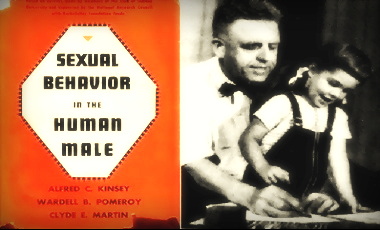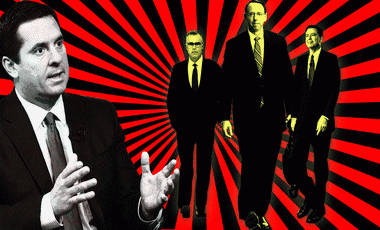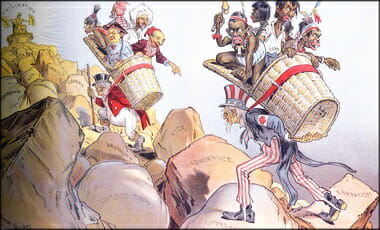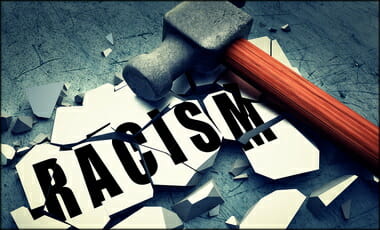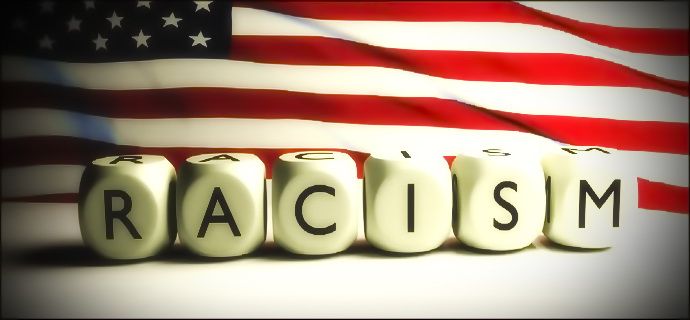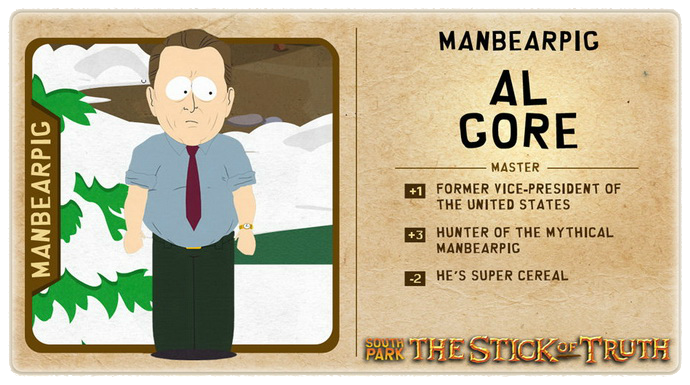Two links worth clicking on… one is my main PEDOPHILIA post and the other is from THE FEDERALIST, here is a short clip:
The left always plays the long game, and this one is no exception. Acceptance of pedophilia can be traced to the monstrous Dr. Alfred Kinsey, an entomologist by training who branched out into the study of human sexuality supposedly in response to student questions about sex and marriage.
Actually, though, as his subsequent work proved, Kinsey had a special interest in perversion. His groundbreaking “research” on sexual behavior included extensive observation of infant responses to sexual stimuli. If not a pedophile himself (views differ), he collaborated for years with at least one pedophile who meticulously cataloged his abuse of hundreds of children from 1917 to 1948 — the infamous “children of Table 34.”
The Phil Donahue Show (12-5-1990) The entire appearance can be watched here. Dr. Judith Reisman’s entire chapter on the children experimented on can be read here (PDF). This post is to augment/add-to this post titled: “The Left’s Fanaticism and Hypocrisy ~ Children Suffer”.
After this long quote, I will post my two uploads to two [dated] full length documentaries, detailing the perverted aspect of what the Left defends.
But first, a quote from one of my favorite authors. This is a large excerpt from one of my favorite authors… his books are nothing but packed full of facts and references to chase down – always fun for me.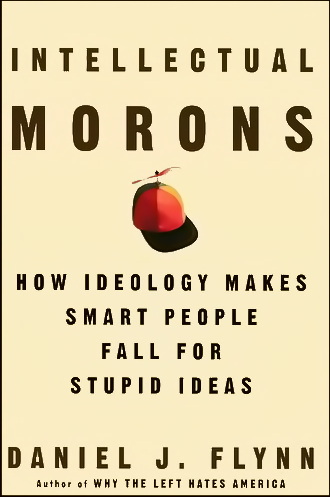
- Daniel J. Flynn, Intellectual Morons: How Ideology Makes Smart People Fall for Stupid Ideas (New York, NY: Crown Publishing Group, 2004), 33, 34-35, 36-39, 40, 41-42, 45-49.
CHAPTER 2 “SCIENCE!”
[p.33>] WHAT MOTIVATES SOCIAL REVOLUTIONARIES? DO THEY SELFLESSLY long for an elevation of society onto a higher plane, or is it their selfish design to bring the world down to their own degraded level?
Jean-Jacques Rousseau was incapable of holding a job and sponged off women his entire life. He spawned five children, not one of whom he bothered to name, all of whom he abandoned to almost certain death at an asylum. He was a sexual pervert and enjoyed physical punishment and exposing himself to women.1 Should it surprise us, then, that he advocated a philosophy of sexual anarchy, state ownership of children, and the subsidization of those unwilling to work?
British writer Paul Johnson reminds us that so far as we know, “Marx never set foot in a mill, factory, mine, or other industrial workplace in the whole of his life.”2 His war against free enterprise stemmed not from solidarity with the workers but from his constant debts, unemployment, and inability to support his family. His mother complained, “Karl should accumulate capital instead of just writing about it.”3
[….]
[p.34>] Halfway through the twentieth century, Indiana University professor Alfred Kinsey launched what was perhaps the first salvo in the Sexual Revolution. The Kinsey Reports hit postwar America like a sucker punch. Claiming that more people than America was willing to admit engaged in premarital sex, homosexuality, adultery, and various other frowned-upon pursuits, 1948’s Sexual Behavior in the Human Male and 1953’s Sexual Behavior in the Human Female revolutionized American law, culture, education, and a host of other areas. Critics of the best-sellers, the media informed America, were to Kinsey what the Church was to Galileo. Kinsey, after all, was a “scientist.”
[….]
Partisans and detractors agree that Kinsey changed the world. While time obscures his name, Kinsey’s spirit looms large in a world much more indulgent of unsettling sexual behavior:
- A March 2000 state-funded conference in Massachusetts instructed high school students how to engage in a sexual practice called “fisting” and dispensed bandages for “when the sex got really rough.”4
- Videos aired by MTV after school, by performers like Christina Aguilera and Britney Spears, increasingly resemble soft-core porn on late-night pay television.
- [p.35>] In 2003, Rolling Stone explored the homosexual subculture of “bug chasers” and “gift givers.” The labels refer to gays who actively seek HIV, and the men who grant their wish. One bug chaser, who ironically volunteered as an AIDS educator, explained, “I think it turns the other guy on to know that I’m still negative and that they’re bringing me into their brotherhood. That gets me off, too.” The moment he is infected, he confessed, will be “the most erotic thing I can imagine.”5 The piece seems to have exaggerated the popularity of such pursuits, but this sensationalism didn’t negate the fact that something this sick actually occurs.
- Some institutions have begun constructing third bathrooms for transgender people. The Massachusetts Bay Transit Authority, for instance, doled out $8,000 to build a bathroom for a single employee.6
- A Florida group hosts a nudist camp for children, featuring such activities as a naked talent show and eating s’mores nude around a campfire.7
- After tying up and gagging a blindfolded classmate, a San Francisco Art Institute student performed a class project with him in front of students, two professors, and security. This is how the “artist” described the outdoor event: “I engaged in oral sex with him and he engaged in oral sex with me. I had given him an enema, and I had taken a shit and stuffed it in his ass. That goes on, he shits all over me, I shit in him.”8
Post-Kinseyan America is very different from pre-Kinseyan America. The Indiana University professor set into motion radical societal changes. No less a sexual revolutionary than Hugh Hefner, founder of Playboy, has labeled himself “Kinsey’s pamphleteer.”9 Though it is too simplistic to pin the blame or credit for any social trend on one person, Alfred Kinsey has had extraordinary influence.
[….]
[p.36>] A “SECOND DARWIN”?
Born in Hoboken, New Jersey, to middle-class parents on June 23, 1894, Alfred Charles Kinsey was the first of three children. From the age of ten onward, Kinsey grew up in the more suburban South Orange, where, biographer James Jones notes, “he did not make a single close friend.”10 As peers played, Kinsey spent most of his early years indoors as a result of a heart condition and bouts with rickets, measles, typhoid, chicken pox, and rheumatic fever. His bookish nature denied him opportunities to develop normal relationships. He was the only boy in his high school class not to play at least one varsity sport.
Kinsey excelled in academics, however. His high school yearbook’s “class prophecy” predicted that Kinsey, the class valedictorian, would become the “second Darwin.”11 At elite Bowdoin College, he was one of two students to graduate magna cum laude. Kinsey went on to do graduate work in biology at Harvard, where he came under the sway of Dean William Morton Wheeler. “Thanks to Wheeler’s influence,” Jones observes, “Kinsey left Boston believing that biologists should become social engineers, shaping public policy and altering private attitudes on a variety of issues, ranging from eugenics, to private morality.”12
Yet Kinsey’s metamorphosis had come long before he had set foot on the Cambridge, Massachusetts, campus. From an early age, the superficially austere Kinsey had begun to engage in a variety of bizarre activities. “For a boy like Kinsey, a righteous boy whose sense of self-worth depended upon rigid self-control, nothing needed to be kept more hidden than the fact that he masturbated and that he did so with a foreign object inserted up his penis,” Jones writes. “By late adolescence, his masochism was well advanced. He had progressed beyond straws and was inserting a brush back up his penis, a practice he would continue for life, at times changing the instrument of self-torture, but never the point of attack.”13 Rather than control his destructive behavior, Kinsey projected his perversions upon society through “science.”
[p.37>] Kinsey picked up another peculiar habit in these years. After earning honors as one of America’s first Eagle Scouts, Kinsey devoted an unnatural amount of time to mentoring boys. He taught Sunday school, served as a counselor for the YMCA and the Boy Scouts, and helped start organizations for boys where none existed. At Bowdoin he involved himself in the Brunswick Boys Association.14 At Harvard he helped found a boys’ club at his Methodist church.15 Even as a professor at Indiana University, he left his wife of three years to spend the summer as a camp counselor for boys.16 In total, Kinsey would devote more than ten summers to working at boys’ camps.17 Kinsey compensated for his unrealized boyhood by partaking in male adolescent pursuits well into adulthood.
He quickly accepted a teaching position at Indiana University in 1920 after completing graduate work at Harvard. The new professor of zoology began dating a student, Clara McMillen. After a two-month courtship, he proposed, and six months later they married. At their wedding there was no best man, nor did Kinsey have any family in attendance.18 The academic’s voracious sexual appetites were not so wide as to include much of a taste for women, leaving the marriage unconsummated for months.19
Kinsey’s early years as a professor were marked by his authorship of several lucrative textbooks and by long field trips in remote parts of the country searching for gall wasps. On these trips he would bring along male assistants, who would be startled by Kinsey’s work attire of various stages of undress, as well as his regimented demand for continual bathing by them. “For Kinsey not only ordered his students to bathe; he routinely checked while they were showering, ostensibly to make certain they were complying with his orders,” Jones notes. If this were not strange enough, Kinsey insisted on showering with his students. One befuddled student was left to confess to his diary, “Such a mania for baths I’ve never seen.”20
In the classroom, Jones says, “Kinsey made no effort to conceal his desire to politicize young people.”21 But Kinsey’s primary interest was not the classroom. It was sex. In July 1938 Kinsey collected his first sexual history. He collected thousands more over the next few years, oblivious to the war that had engulfed the world around him. In 1945 he quit teaching entirely to focus exclusively on his research. He released his first report within three years and became one of the most recognizable names on the planet.
[p.38>] “THE VERY EMBODIMENT OF MIDDLE AMERICAN SQUARE”?
The Kinsey that has been passed on by college texts and popular histories is that of the disinterested scientist whose research is unimpeachable. In David Halberstam’s The Fifties, Kinsey is “prudish,” “old fashioned,” and “the very embodiment of Middle American square.”22 Rutgers University professor William O’Neill praises Kinsey in American High as a “hero of science”; those who pressured the Rockefeller Foundation to cut Kinsey’s funding won “a victory for small mindedness.”23 Paul Johnson’s History of the American People affirms Kinsey’s statistics and explains that his “findings . . . confirmed much other evidence that, even in the 1950s, the Norman Rockwell images no longer told the full story.”24 William Manchester’s Kinsey in The Glory and the Dream is “an objective investigator,” “a stickler for explicit detail,” and a “disciple of truth.” “As a scientist,” Manchester informs readers, “he had naturally played no favorites.”25
But Kinsey, as we know now, was a very different kind of “scientist.” He was a homosexual, a wife-swapper, a sadomasochist, and, some suspect, a pedophile—much more involved in his work than the keepers of the tablets would have us believe.
The real Kinsey lent his wife to other men. His attic served as a personal pornographic movie studio. His fellow researchers, Wardell Pomeroy and Clyde Martin, also acted as his sex partners. One Kinsey researcher bragged about having bedded a dog. Others were committed sadomasochists. The common denominator among the staff at the Institute for Sex Research was a pursuit of sex that was outside of societal conventions.
In large part because of their zeal for abnormal sex, the Kinsey team focused their research on people who deviated from community standards—pimps, prostitutes, homosexuals, and imprisoned sex offenders. Kinsey’s “methodology and sampling technique virtually guaranteed that he would find what he was looking for,” writes Jones.26
Kinsey’s perversion was often self-destructive. For most of his life, he masturbated with a toothbrush inserted in his urethra. At one point, Kinsey crawled into a bathtub, pulled out his pocketknife, and, says Jones, “circumcised himself without benefit of anesthesia.”27 He engaged in auto-asphyxiation while masturbating and pierced his genitals to such an extent that by the end, biographer Jonathan Gathorne-Hardy reveals, there was “nothing left to pierce.”28 Jones describes perhaps the most dis [p.39>] -turbing occurrence, from Kinsey’s final years: “[H]e tied a strong, tight knot around his scrotum with one end of the rope dangling from the pipe overhead. The other end he wrapped around his hand. Then, he climbed up on a chair and jumped off, suspending himself in midair.”29 This particular self-inflicted torture hospitalized Kinsey for weeks and was part of a pattern of behavior that, ironically, had caused impotence for this champion of “sexual freedom.”30
Kinsey’s need for control manifested itself in demands to know the sexual histories of his workers and their families. He regulated the sexual behavior of those on his staff and demanded access to them and, occasionally, their wives. The pressure, recalled one wife, was “sickening.” She “felt like my husband’s career at the Institute depended on it.”31 So great was his dominance that Pomeroy and Martin felt compelled to ask his permission to engage in extramarital affairs. Another Kinsey researcher, Paul Gebhard, was once ordered to cease an affair by his apologetic boss, who normally preferred to order his underlings to have sex, not to stop having it.32 Kinsey’s work environment was more Spahn Ranch than Menlo Park.
Kinsey used a bizarre litmus test for prospective employees and almost without fail hired those with sexual histories falling well outside the mainstream. When one employee, Vincent Nowlis, showed squeamishness toward a sexual case history, Kinsey, Pomeroy, and Martin cornered him in a hotel room. Jones writes, “As near as Nowlis could tell, his boss was offering to provide ‘seductive instruction’ that would involve ‘learning plus pleasure.’” Nowlis explained that his boss’s advances “obviously would involve some kind of sexual activity on my part.” But, he said, “I didn’t see my wife or any desirable partners, shall we say, around, and I wasn’t interested.” The sexual harassment persuaded Nowlis to announce his resignation the following day.33
Jones describes the Indiana University professor as a “secular evangelist,” “a scolding preacher rather than a disinterested scientist,” and a “covert revolutionary” who “used science to lay siege to middle class morality.”34 Kinsey, explains Jones, engaged in “a public crusade for private reasons.”35 At every turn these “private reasons”—perversion and a need to dominate others—permeated his “scientific” work.
[p.40>] QUEER FINDINGS
[….]
[p.42>] This was at a time when he had collected 590 histories, meaning that histories from individuals he knew to be gay constituted about 20 percent of his total sample group.50 There is no specific record of the number of homosexual histories after this point, but we do know that Kinsey continued to track down gay men to interview. Kinsey actively sought out homosexuals by developing key contacts in the urban gay subcultures of Chicago, Philadelphia, St. Louis, and other cities. In New York, for instance, Kinsey stayed at the Astor in Times Square because its street-level bar was a hangout for gays seeking anonymous sex.51 Within the pages of Sexual Behavior in the Human Male, Kinsey candidly admits that “several hundred male prostitutes contributed their histories” to the survey.52
Seeking out homosexuals not only weighted Kinsey’s study toward his predrawn conclusions but provided him sexual liaisons as well. Kinsey was anything but the detached researcher. At times he had sex with subjects he was supposed to be interviewing. For one interview in 1946, Kinsey invited a Dr. Earle Marsh to his hotel room. Jonathan Gathorne-Hardy writes, “While they chatted, Marsh suddenly told him he’d had a fantasy of having sex with him. ‘[I told him] with no idea in mind except to report it.’” Kinsey then turned to Marsh and decreed, “Take off your clothes.” They had sex and would do so every subsequent time they met.53 On some occasions the professor would surreptitiously view others engaging in intercourse.54
Preselecting homosexuals was only part of the equation to bias the results. Kinsey also stacked the sample group with prison inmates. In 1941, for instance, Kinsey visited forty penal farms—more than three times the amount of campuses where he collected histories (an early complaint was that Kinsey focused his interviews too much on students).55 A Kinsey staff member claimed years later that 44 percent of the inmates Kinsey interviewed had had homosexual experiences, while the authors [p.42>] themselves placed the figure in a higher range.56 Whatever the real number, one need not be a sexologist to know that prisons are a breeding ground for homosexual activity and that prisoners normally have rebelled against societal norms not just in their criminal activities. Yet padding the sample group with inmates was not enough. The researchers pursued a particular type of inmate, the sex offender, to skew the survey’s results further. This still was insufficient, as a particular type of sex offender, the most perverse and abnormal, became the focus of interviews. All three of Kinsey’s coauthors have since admitted that their prison histories ignored scientific sampling techniques and focused on the most perverse sex offenders, including those who had practiced incest, rape, and pedophilia. Paul Gebhard—a coauthor of the Female volume, an institute staff member at the time of the Male volume’s release, and later a director of the institute—candidly states that the focus on sexual deviants was quite deliberate: “At the Indiana State Farm we had no plan of sampling—we simply sought out sex offenders and, after a time, avoided the more common types of offense (e.g., statutory rape) and directed our efforts toward the rarer types.”57 Male volume coauthor Wardell Pomeroy concurs: “We went to the [prison] records and got lists of the inmates who were in for various kinds of sex offenses. If the list was short for some offenses—as in incest, for example—we took the history of everybody on it. If it was a long list, as for statutory rape, we might take the history of every fifth or tenth man.”58 A third coauthor, Kinsey’s gardener-turned-colleague Clyde Martin, notes that the institute team sought out sex offenders serving time for “contributing to the delinquency” of minors.59
While it is clear that the institute staff took thousands of inmate histories, it is not known how many made it into the data used for Sexual Behavior in the Human Male. Credible estimates based on remarks by Kinsey and others place the total amount used at around 20 percent to 25 percent.60 Until the institute opens up its files for scholarly examination—provided that the records exist, as they claim—the number of prisoners surveyed can only be estimated.
[….]
AMERICAN MENGELE?
[p.45>] In 1981, Judith Reisman addressed the Fifth World Congress of Sexology in Jerusalem. Her speech accused one of the most respected academics of the twentieth century of complicity in the rape and abuse of children, and of pawning off fraudulent data as legitimate scholarly material. The subject of her earth-shattering talk was Alfred Kinsey. Of Kinsey’s famous reports, Dr. Reisman announced, “such mercantile pseudo-science even [p.46>] -tually defames the entire scholarly community, and tends to implicate us all as popularizers of whatever ‘truth’ is paying dividends at the moment.”76
In Sexual Behavior in the Human Male and Sexual Behavior in the Human Female, Kinsey’s team claimed that children were sexual beings essentially from birth, meaning that even infants were capable of orgasm. Until Reisman came along in 1981, it apparently did not occur to anyone to question publicly how Kinsey and his men came to this conclusion.
Kinsey collected data on at least 317 male children and numerous additional female children. Infants as young as five months old, said Kinsey, achieve “orgasm” after being stimulated from “partners.” Symptoms of sexual climax for young children, claimed Kinsey, often included “sobbing,” “violent cries,” “loss of color,” and an “abundance of tears.” He added that often the child “will fight away from the partner and may make violent attempts to avoid climax.” From all this he deduced that the child derived “definite pleasure” from the situation.77
For a man who gained joy from hanging himself by his testicles, circumcising himself with a pocketknife, and inserting toothbrushes into his urinary tract, the children’s responses might very well have been interpreted as pleasure. For almost everyone else it is clear that the expressions of these babies were not of delight but of extreme terror.
Kinsey’s charts show how an eleven-year-old was supposedly brought to orgasm nineteen times in one hour and how a two-year-old was brought to orgasm eleven times in sixty-five minutes. One unfortunate four-year-old boy was manipulated to “climax” twenty-six times in a twenty-four-hour period by someone Kinsey labeled a scientifically “trained observer.”78 In Kinsey’s sanitized jargon, Reisman pointed out, these unfortunate kids were no longer children—referred to as such on only one occasion—but “individuals” (five references) and “pre-adolescent” (seven references). Their tormentors were not rapists or molesters, but “partners” or “scientifically trained observers.”79
That Kinsey allowed child molesters to dictate whether these children enjoyed being molested speaks volumes not only about his character but about his interest in real science as well. His methods were something akin to relying on tobacco executives to determine the addictiveness of nicotine, or allowing a rapist to discern whether his victim really “wanted” sex.
Dripping from every page of his work on preadolescent sexuality is the notion that sex between children and adults is natural and healthy. Child [p.47>] -adult sexual contacts, Kinsey writes, “had involved considerable affection, and some of the older females in the sample felt that their pre-adolescent experience had contributed favorably to their later socio-sexual development.”80 At another point, he puts the blame of adult-child sexual contact on kids: “Children, out of curiosity, sometimes initiate the manipulation of male genitalia, even before the male has made any exposure.”81 Are children harmed by such contacts? According to Kinsey, yes and no. He writes:
[S]ome 80 per cent of the children had been emotionally upset or frightened by their contacts with adults. A small portion had been seriously disturbed; but in most instances the reported fright was nearer the level that children will show when they see insects, spiders, or other objects against which they have been adversely conditioned. If a child were not culturally conditioned, it is doubtful if it would be disturbed by sexual approaches of the sort which had usually been involved in these histories.82
Kinsey adds that to the extent that a child is damaged after having sexual contact with an adult, the rapist is not to blame; rather, the child is harmed by the “hysteria” created by police, parents, and others.83
How Kinsey obtained his data on children is a point of contention. Current Kinsey Institute director John Bancroft and past director June Reinisch have attested that the data came from a lone pedophile.84 The authors of the Male report claimed that nine scientifically inclined pedophiles observed preadolescent orgasm.85 Kinsey confidant and colleague Paul Gebhard states that the Indiana University researchers got their data from pedophile organizations, sex offenders, and numerous individuals who had volunteered information.86 Someone isn’t telling the truth, but why?
Was Kinsey himself a pedophile?
It is quite possible that Kinsey—who privately condoned child-adult sexual encounters and acted as a longtime counselor for such groups as the Boy Scouts and the YMCA—was a prime “observer” and source of information. The fact that hundreds of children were molested to generate data is not the evidence. Kinsey also bragged of his large collection of early adolescent sperm. “You can only collect early adolescent ejaculate by being pretty close to the adolescent,” Reisman points out. “Early adolescent sperm is not collected by recall.”87 Although there is no direct proof [p.48>] that Kinsey raped any of these children, it is irresponsible not to raise the question. If it wasn’t Kinsey, then who raped hundreds of children in the name of science?
One child rapist Kinsey relied on for “research” was a Mr. Rex King, who, in addition to bedding his grandmother and most other members of his family, had about eight hundred sexual contacts with children. King continued to molest children and report back to the Institute for Sex Research, with the full knowledge of Kinsey, until 1954, after both volumes had been released. “I congratulate you on the research spirit which has led you to collect data over these many years,” Kinsey admiringly wrote to King. “Everything that you’ve accumulated must find its way into scientific channels.”88
Another child molester who assisted Kinsey was a Nazi party official and former Waffen S.S. officer, Fritz von Balluseck. As the Nazi commandant of the Polish town of Jedrzejow, von Balluseck used his position of power to abuse children sexually. He reportedly told the Jewish children under his watch, “It is either the gas chamber or me.”89 They got both. In 1957 von Balluseck was put on trial for murdering a child and was convicted of molesting scores of others long after the war had ended. The West German press reported von Balluseck’s collaboration with Kinsey. One paper noted that von Balluseck had been “encouraged to continue his research” by Kinsey.90 The presiding judge in von Balluseck’s trial said to the defendant, “I got the impression that you got to the children in order to impress Kinsey and to deliver him material.” Von Balluseck responded, “Kinsey himself asked me for that.”91
Kinsey’s child molesters are beyond the reach of justice. Their victims, however, are for the most part still with us and can be helped if they are found. Unfortunately, Indiana University’s Kinsey Institute remains clouded in secrecy. Concerning “interviews” with small girls, Reisman wonders, “If, as the Kinsey team claimed, a parent was always present during the and ‘Uncle Pomeroy’ and the small girl, and if all of the names of every subject is in secret code in the Institute data base, as they claimed, why are these children not traceable?”92
One victim who has come forward is Esther White.[Esther White is not her real name] As a child in 1940s Ohio, she was repeatedly molested by her father. “It was for years,” [p.49>] she said. “He was not physically abusive, maybe psychologically abusive, [treating me] like a slave.”93 Even among child molesters, Esther’s dad was peculiar. He consulted his watch after he finished raping his daughter. He filled out charts and questionnaires. And he apparently shared the fact that he was forcing sex upon his daughter with members of his family and other acquaintances.94
In the mid-1940s, Esther traveled from her home to Columbus, Ohio. She remembers the trip as “a big deal.” In Columbus she met some scientists. One of them was Alfred Kinsey, she says. “There was a meeting between Alfred Kinsey and myself and two other men from the Kinsey Institute, my father, and my grandfather, and my great-grandmother,” she remembers. “I was a child. I didn’t understand any of it.” Kinsey’s connection to her childhood trauma didn’t dawn on her until the early 1990s. “I basically buried it until I heard Judith [Reisman]. . . . I knew I had met Alfred Kinsey, but it didn’t mean anything. He was introduced to me. My grandfather was very proud of knowing him. My grandfather went to Indiana University.”95 Records confirm that the Kinsey team stopped in Columbus to interview young children during that time period.96
When asked if Kinsey’s research was worth it, considering the cost of obtaining such data, current Kinsey Institute president John Bancroft curtly responded, “Consider the cost of remaining ignorant.”97
To that, White quietly responds, “Remaining ignorant would have meant I would have been a virgin when I married my husband. [Kinsey] took away my virginity by brainwashing my father.”98
FOOTNOTES
- Will Durant and Ariel Durant, Rousseau and Revolution (New York: MJF Books, 1967), pp. 6, 8, 18.
- Paul Johnson, Intellectuals (New York: Harper & Row, 1989), p. 60.
- Quoted in Johnson, Intellectuals, p. 74.
- “Kids Get Graphic Instruction in Homosexual Sex,” www.massnews.com/ past_issues/2005/5_May?maygsa.htm, accessed on October 13, 2003. [New Link: MASS RESISTANCE]
- Gregory A. Freeman, “Bug Chasers: The Men Who Long To Be HIV+,” Rolling Stone, February 6, 2003, pp. 45–48.
- Laura Brown, “Transsexual Toilet Costs T $8G,” Boston Herald, June 6, 2000, p. 1.
- Katie Zernike, “At Nude Youth Camp, Skin Is Bare but Lust Is Verboten,” New York Times, June 18, 2003, p. 18.
- Quoted in Matt Smith, “Public Enema No. 2,” SFWeekly.com, February 23, 2000, available at www.sfweekly.com/issues/2000-02-23/feature.html/1/index.html, accessed on October 13, 2003. [New Link: FREE REPUBLIC]
- Quoted in Judith Reisman, “Exposing Pornography’s Addictive, Destructive Effects,” Human Events Online, December 16, 2003. Available at id-2618″>www.humaneventsonline.com/article.php?print-yea&id-2618, accessed on May 1, 2004. [New Link: PDF]
- James H. Jones, Alfred C. Kinsey: A Public/Private Life (New York: W. W. Norton, 1997), p. 33.
- Jones, Alfred C. Kinsey, p. 32.
- Jones, Alfred C. Kinsey, pp. 153–154.
- Jones, Alfred C. Kinsey, p. 82.
- Jones, Alfred C. Kinsey, pp. 117–118.
- Jones, Alfred C. Kinsey, p. 139.
- Jones, Alfred C. Kinsey, p. 264.
- Jones, Alfred C. Kinsey, p. 155.
- Jones, Alfred C. Kinsey, p. 172.
- Jones, Alfred C. Kinsey, p. 174.
- Quoted in Jones, Alfred C. Kinsey, p. 281.
- Jones, Alfred C. Kinsey, p. 189.
- David Halberstam, The Fifties (New York: Villard Books, 1993), pp. 272–281.
- William O’Neill, American High (New York: The Free Press, 1986), pp. 45, 47.
- Paul Johnson, A History of the American People (New York: HarperCollins, 1998), p. 840.
- William Manchester, The Glory and the Dream (Boston: Little, Brown, 1974), pp. 477, 478.
- Jones, Alfred C. Kinsey, p. 533.
- Jones, Alfred C. Kinsey, p. 610.
- Jonathan Gathorne-Hardy, Sex the Measure of All Things: A Life of Alfred C. Kinsey (Bloomington, IN: Indiana University Press, 2000), pp. 336, 414.
- Jones, Alfred C. Kinsey, p. 739.
- Gathorne-Hardy, Sex the Measure of All Things, p. 415.
- Jones, Alfred C. Kinsey, p. 607.
- Jones, Alfred C. Kinsey, pp. 499, 608.
- Jones, Alfred C. Kinsey, p. 491.
- Jones, Alfred C. Kinsey, pp. 335, 532, 602.
- Jones, Alfred C. Kinsey, p. 397.
[….]
- Jones, Alfred C. Kinsey, p. 387.
- Gathorne-Hardy, Sex the Measure of All Things, p. 239.
- Kinsey et al., Sexual Behavior in the Human Male, p. 216.
- Gathorne-Hardy, Sex the Measure of All Things, p. 248.
- Gathorne-Hardy, Sex the Measure of All Things, p. 307.
- Gathorne-Hardy, Sex the Measure of All Things, p. 189.
- Reisman and Eichel, Kinsey, Sex and Fraud, p. 23; A. C. Kinsey, W. B. Pomeroy, C. E. Martin, P. H. Gebhard, Sexual Behavior in the Human Female (Philadelphia: W.B. Saunders, 1953), p. 21.
- See Judith Reisman, Kinsey: Crimes & Consequences (Arlington, VA: Institute for Media Education, 1998), p. 94; Reisman and Eichel, Kinsey, Sex and Fraud, p. 22.
- Reisman and Eichel, Kinsey, Sex and Fraud, p. 22.
- Reisman, Kinsey: Crimes & Consequences, p. 94.
- Reisman and Eichel, Kinsey, Sex and Fraud, pp. 22–24. Passage includes the authors’ estimate that 25 percent of the male sample group Kinsey used for his book were inmates, and Kinsey Institute staffer John Gagnon’s opinion that 900–1,000 of the males used for the survey were prisoners.
[….]
- Dr. Judith Reisman, “The Scientist as Contributing Agent to Child Sexual Abuse: A Preliminary Consideration of Possible Ethics Violations,” 5th World Congress of Sexology, Jerusalem, Israel, July 23, 1981.
- Kinsey et al., Sexual Behavior in the Human Male, p. 161.
- Kinsey et al., Sexual Behavior in the Human Male, p. 180.
- Reisman, “The Scientist as Contributing Agent to Child Sexual Abuse.”
- Kinsey et al., Sexual Behavior in the Human Female, p. 121.
- Kinsey et al., Sexual Behavior in the Human Female, p. 120.
- Kinsey et al., Sexual Behavior in the Human Female, p. 122.
- Kinsey et al., Sexual Behavior in the Human Female, pp. 121–122.
- Reisman, Kinsey: Crimes and Consequences, pp. 167, 170.
- Kinsey et al., Sexual Behavior in the Human Male, p. 177.
- Secret History: Kinsey’s Paedophiles, Yorkshire Television, Channel 4 (October 8, 1998), Producer, Tim Tate.
- Reisman quote and information on Kinsey’s adolescent sperm collection appear in E. Michael Jones, Degenerate Moderns: Modernity as Rationalized Sexual Misbehavior (San Francisco: Ignatius, 1993), p. 108.
- Kinsey’s Paedophiles, Tim Tate.
- Judith Reisman, Kinsey: Crimes and Consequences (Institute for Media Education: Crestwood, Kentucky, 2000), p. 166 (2nd edition).
- Quoted in Judith Reisman, Kinsey: Crimes and Consequences (Institute for Media Education: Crestwood, Kentucky, 1998), pp. 165–167.
- Quoted in Kinsey’s Paedophiles, Producer, Tim Tate.
- Reisman, Kinsey: Crimes and Consequences, p. 162.
- Phone interview of “Esther White” by author, August 2, 2000.
- Information comes from my phone interview of White on August 2, 2000, as well as the documentary Kinsey’s Paedophiles, Producer, Tim Tate.
- Phone interview of Esther White by author, August 2, 2000.
- Gathorne-Hardy discusses Kinsey’s work with children in Columbus on pp. 208, 215, 227.
- Kinsey’s Paedophiles, Producer, Tim Tate.
- Phone interview of Esther White by author, August 2, 2000.
DOCUMENTARIES
Secret History: Kinsey’s Paedophiles (October 8, 1998)
50-minutes long | (Old VHS documentary – played with the audio a ted, sharpened it a bit and decreased the oranges and brightened it… still a small crappy file to use.) This is a Yorkshire Television production for Channel 4, produced and directed by Tim Tate, aired August 10, 1998. The show features interviews with Kinsey team members Paul Gebhard and Clarence Tripp, Kinsey Institute director John Bancroft and several of Kinsey’s biographers.
It is about the controversial research of Alfred Kinsey, an American sexologist who studied human sexuality in the 1940s and 1950s. The documentary reveals that some of his data was based on the sexual abuse of children by pedophiles.
If you would rather watch the larger documentary, one YouTube file is HERE
The Kinsey Syndrome (December, 2009)
2 hours and 45 minutes – This is the final upload I worked long and hard at for a post on Kinsey. This documentary is by far too long, but if you have the time, encyclopedic in its coverage. It was released in December of 2009.
IMDB SUMMARY: Working secretly in his attic, Dr. Kinsey was one of America’s original pornographers. His influence inspired Hugh Hefner to launch Playboy Magazine – the “soft” approach to porn – which in time would escalate the widespread use of pornography through magazines, cable TV and the Internet. In 2006 the California Child Molestation and Sexual Abuse Attorneys reported that: “The number of victims of childhood sexual abuse and molestation grows each year. This horrific crime is directly tied to the growth of pornography on the Internet.”
IMDB SYNOPSIS:
The Kinsey Sydrome shows how “The Kinsey Reports” have been used to change the laws concerning sex crimes in America, resulting in the minimal sentences so often given to rapists and pedophiles. Further explained is how the Kinsey data laid the foundation for sex education – training teachers, psychologists and even Catholic priests in human sexuality. What has been the consequence? And what was Kinsey’s research really based upon?
Working secretly in his attic, Dr. Kinsey was one of America’s original pornographers. His influence inspired Hugh Hefner to launch Playboy Magazine – the “soft” approach to porn – which in time would escalate the widespread use of pornography through magazines, cable TV and the Internet. In 2006 the California Child Molestation & Sexual Abuse Attorneys reported that: “The number of victims of childhood sexual abuse and molestation grows each year. This horrific crime is directly tied to the growth of pornography on the Internet.” Perhaps most disturbing, Alfred Kinsey has been accused of training pedophiles to work with stopwatches and record the responses of children being raped – all in the name of “science”. Among his workers was a Nazi pedophile whose relationship to Kinsey was exposed in a German court. The information from these crimes was then recorded in “Table 34” of Kinsey’s Sexual Behavior in the Human Male. How can lawmakers use such a document to define the moral parameters of our society?
Why has the truth about Kinsey been suppressed for so long? And what can Americans do to make a difference?
AMAZON: PRODUCT DESCRIPTION
The Kinsey Syndrome is a powerful documentary that unfolds the life and influence of Dr. Alfred Kinsey, considered to be the father of the sexual revolution. But did Kinsey liberate America from its prudish view of sex? Or help to unleash the horrors of our present society? This documentary shows how The Kinsey Reports of the 1940’s and 50’s have been used through the 20th and 21st century to change laws concerning sex crimes in America, removing protection from America’s women and children. Further explained is that the Kinsey data laid the foundation for sex education — training teachers, psychologists and even Catholic priests in human sexuality. What has been the consequence for society? And what was Kinsey’s research really based upon? Learn the answers to these and other questions in what MOVIEGUIDE called one of the most important productions of the 21st century.
AMAZON: REVIEW
The Bible tells us to expose the fruitless works of darkness. The documentary THE KINSEY SYNDROME does just that in painstaking detail. Each chapter of this video documentary addresses a different aspect of the work of the pseudo-scientist Alfred Kinsey whose fraudulent data laid the cancerous foundation for sex education, perversion, pedophilia, pornography, and the corruption of our culture. It shows how Kinsey trained pedophiles to work with stop watches to record the responses of children being raped in the name of science. One of the pedophiles was a Nazi in Germany whose relationship to Kinsey was exposed in a German court. This documentary shows how the government attempted to investigate Kinsey and his fallacious research and was thwarted by big foundations and other friends of pornography and sexual corruption. It is incredibly well researched, and it builds its case so carefully that it will change even the most hardened heart and mind and should be seen by every teacher, professor, academic, judge, senator and anyone else in authority. Someone should donate this documentary to every teacher, every judge, every member of congress, and all the officials in government. It is one of the most important productions of the 21st century. It is not for the squeamish, faint of heart or young children, but it is must viewing for every culture warrior, every parent and everyone who is concerned by the direction our society is going. — Dr. Ted Baehr, MOVIEGUIDE
